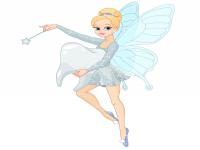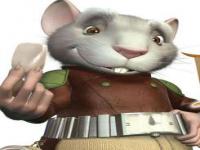Results: The Tooth Fairy and Raton Perez
Published on 01/02/2015
QUESTIONS
GO to COMMENTS
Comments
1.
1.
The Tooth Fairy has been a mainstay in our homes for years, but where did she (or he) come from? Requested by DaddyDuck and Jlrake, here are a few facts about the Tooth Fairy. Let´s see which ones you´ve heard about. THE FIRST TRADITIONS REGARDING BABY TOOTH:

In early Europe they used to bury baby teeth that fell out. When a child's tooth falls out, it is a custom for parents to slip a gift or money from the tooth fairy under the child's pillow, but to leave the tooth as a reward.
18%
435 votes
Some European parents also leave trails of glitter on the floor, representing fairy dust.
6%
150 votes
In northern Europe, there was also a tradition of tand-fé or tooth fee, which was paid when a child lost its first tooth.
5%
120 votes
In England, in the Middle Ages, children were instructed to burn their baby teeth in order to save the child from hardship in the afterlife. Children who didn't consign their baby teeth to the fire would spend eternity searching for them.
3%
73 votes
In the Norse culture, children's teeth and other articles belonging to children, were said to bring good luck in battle
3%
76 votes
The ancient Egyptians believed the sun made teeth strong, so they threw lost teeth towards the sun.
2%
47 votes
The Vikings used to pay their children a “tooth fee” for the use of the children’s teeth, which were then strung onto necklaces and other jewelry. They believed that the power of the children’s teeth would aid them in battle.
3%
71 votes
Scandinavian warriors hung children's teeth on a string around their necks.
3%
63 votes
None of these
69%
1647 votes
2.
2.
THE TOOTH FAIRY AND OTHER MYTHS

In some Asian countries, when a child loses a tooth, he throws it up or down while requesting for the tooth to be replaced with one of a mouse. This is based on the fact that the teeth of mice grow for their entire lives, a characteristic of all rodents.
4%
108 votes
In Japan, a different variation calls for lost upper teeth to be thrown straight down to the ground and lower teeth straight up into the air; the idea is that incoming teeth will grow in straight.
5%
123 votes
The Ratón Pérez is the local version for Argentina, Venezuela, Uruguay and Colombia, originating in Madrid in 1894.
2%
60 votes
In Mexico, Peru and Chile, he is called "el Ratón de los Dientes" (The Tooth Mouse)
3%
63 votes
In France and in French-speaking Belgium, this character is called la petite souris ("the little mouse")
3%
68 votes
From parts of Lowland Scotland comes a tradition similar to the fairy mouse: a white fairy rat purchases children's teeth with coins.
2%
52 votes
In Middle Eastern countries they used to throw a baby tooth up into the sky to the sun or to Allah. This originated in a pre-Islamic offering, and dates back to at least the 13th century.
2%
39 votes
None of these
84%
2006 votes
3.
3.
PROTECT YOUR BABY TOOTH TO STAY SAFE

In medieval Europe, it was thought that if a witch were to get hold of one of your teeth, you could be in big trouble – possession of this part of your body might give them total power over you.
7%
161 votes
By planting the tooth in the garden near their house they were also trying to assist the growth of the new adult tooth in its place.
7%
159 votes
As some towns became more crowded with buildings and less land, the teeth were then buried in flowerpots and eventually moved indoors to be “buried” under a pillow.
6%
140 votes
None of these
83%
1991 votes
4.
4.
THE MODERN TOOTH FAIRY

The tooth fairy as we now know her didn’t make an appearance until the early 1900s, as a generalized “good fairy”. It first appeared in print in 1927 in play for children by Esther Watkins Arnold.
5%
125 votes
The reward left varies by country, the family's economic status, amounts the child's peers report receiving and other factors. A 2013 survey by Visa Inc. found that American children receive $3.70 per tooth on average.
11%
260 votes
Some parents tell their children that the tooth fairy pays a whole lot more for a perfect tooth than for a decayed one, praising the child for good dental habits.
9%
226 votes
The belief in the tooth fairy may provide such comfort to a child experiencing fear or pain resulting from the loss of a tooth.
17%
404 votes
None of these
58%
1386 votes
COMMENTS


